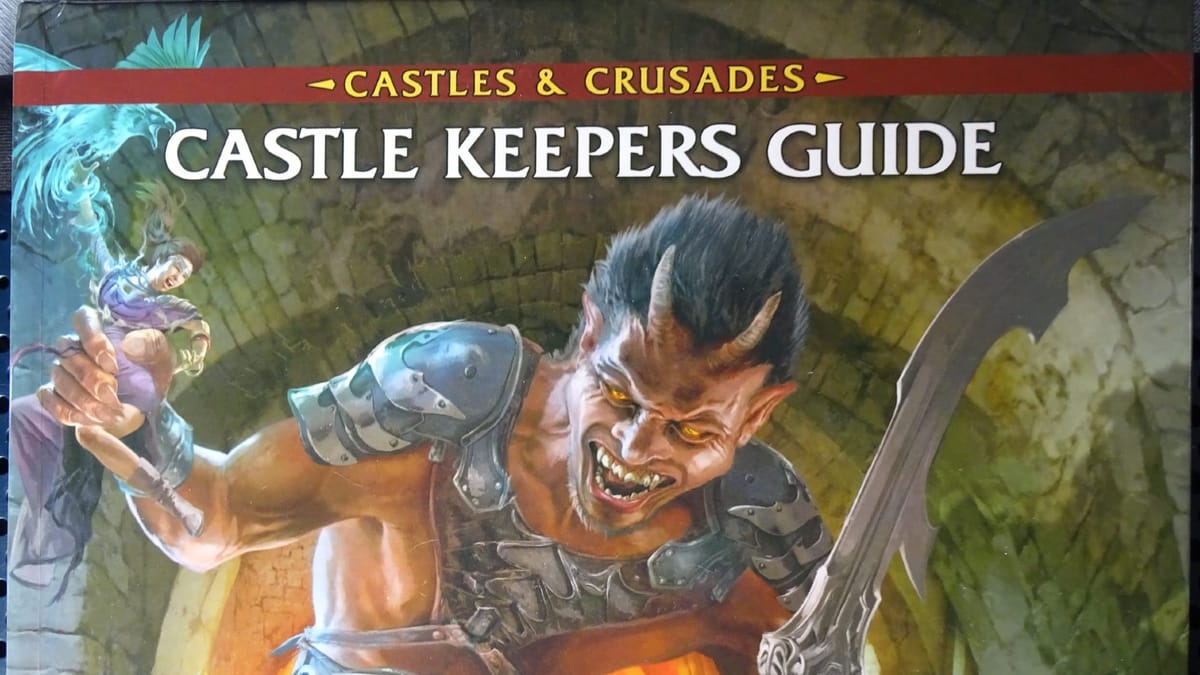
When you see all three C&C core rulebooks together, it’s obvious that the Castle Keepers Guide means business. Pitched to me as containing optional and variant rules, I was immediately curious. In most gamemaster-targeted core books, magic items and campaign settings take up a hefty portion of the page count. I knew that wasn’t the case here; the items are in Monsters & Treasure, and all three books are devoid of setting specifics. So how could this book be over 100 pages longer than the PHB? What new insights and options must it hold? Let’s find out!
The CKG can throw a lot of info at the reader in a short time. This book covers a huge range of topics and rules, many of them in great detail. Even going over each chapter would be quite long. Since the book divides its nineteen chapters into three overarching parts, that seemed the best way forward. However, sometimes specific examples are hard to avoid.
Part one is the first four chapters and is focused on character options. These include the somewhat standard options of new ways to generate attributes, how to make new races, options for the magic system including a point-based system, and more things too numerous to list. It also covers equipment and various types of NPCs and how to use them. Part of that means expansive lists of transportation options and jobs typical of the Medieval fantasy period, with brief descriptions of each. The NPC portion also has all the rules for creating hirelings and henchmen and how to put them to use. The rules are very thorough, covering wages, equipment, loyalty checks, and more, but aren’t difficult once you get to the point of rolling the dice.
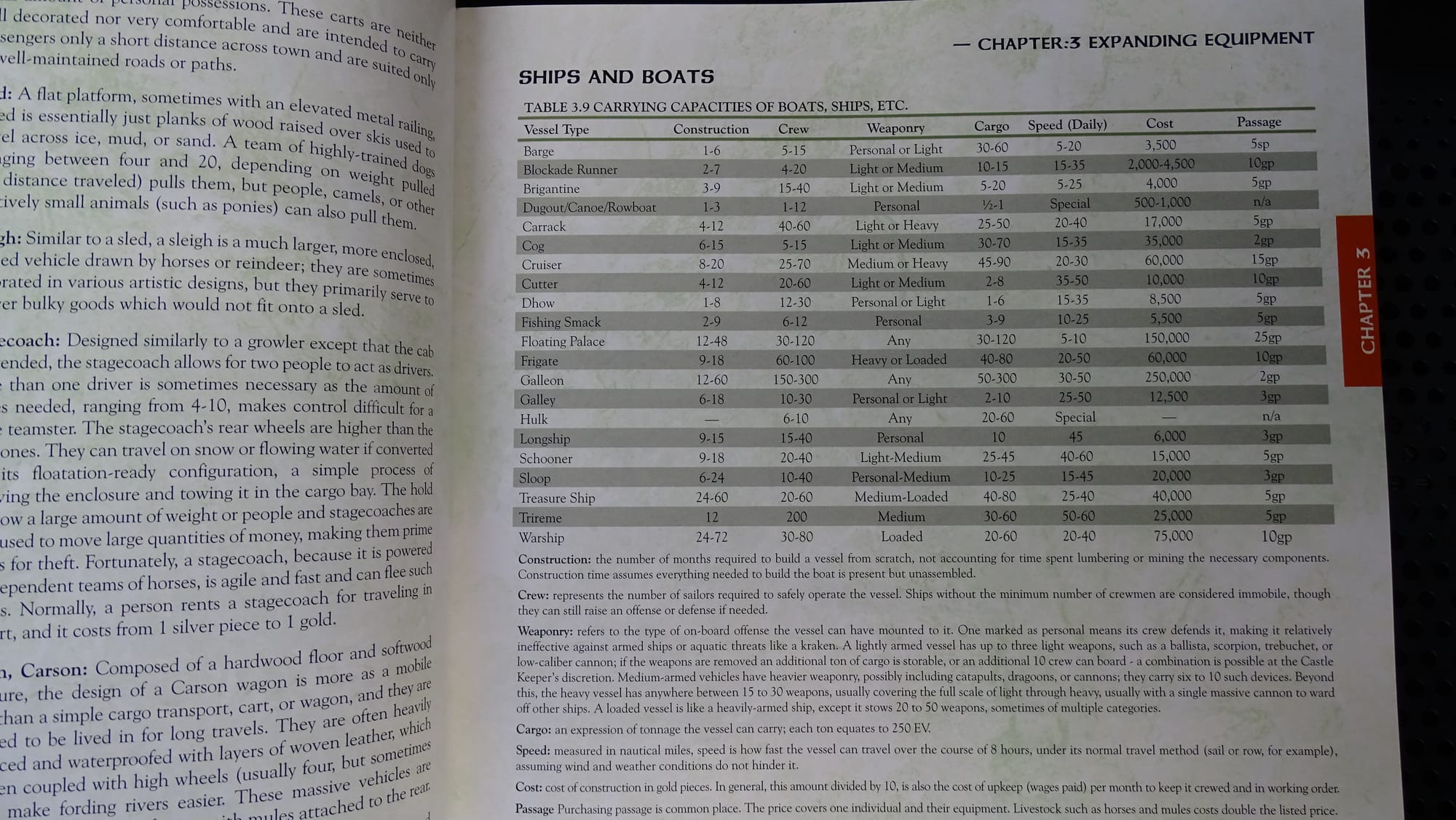
Chapter 5 kicks off the largest of the three parts, labeled “Worlds of Adventure”. Collectively, these chapters cover creating content to run almost any kind of game, and the material they cover is in-depth. As an example, the chapter on cities doesn’t just discuss city size. It goes into types of culture, laws, economics, trade, taxes, religion, why cities are located where they are, how cities are fed at every size, how cities are defended, the names and descriptions of those defenses, and how to have players build them. Every other chapter is given similar levels of detail, even including a multiple-paragraph primer on plate tectonics and what happens to your gear if you spend several days in the pouring rain.
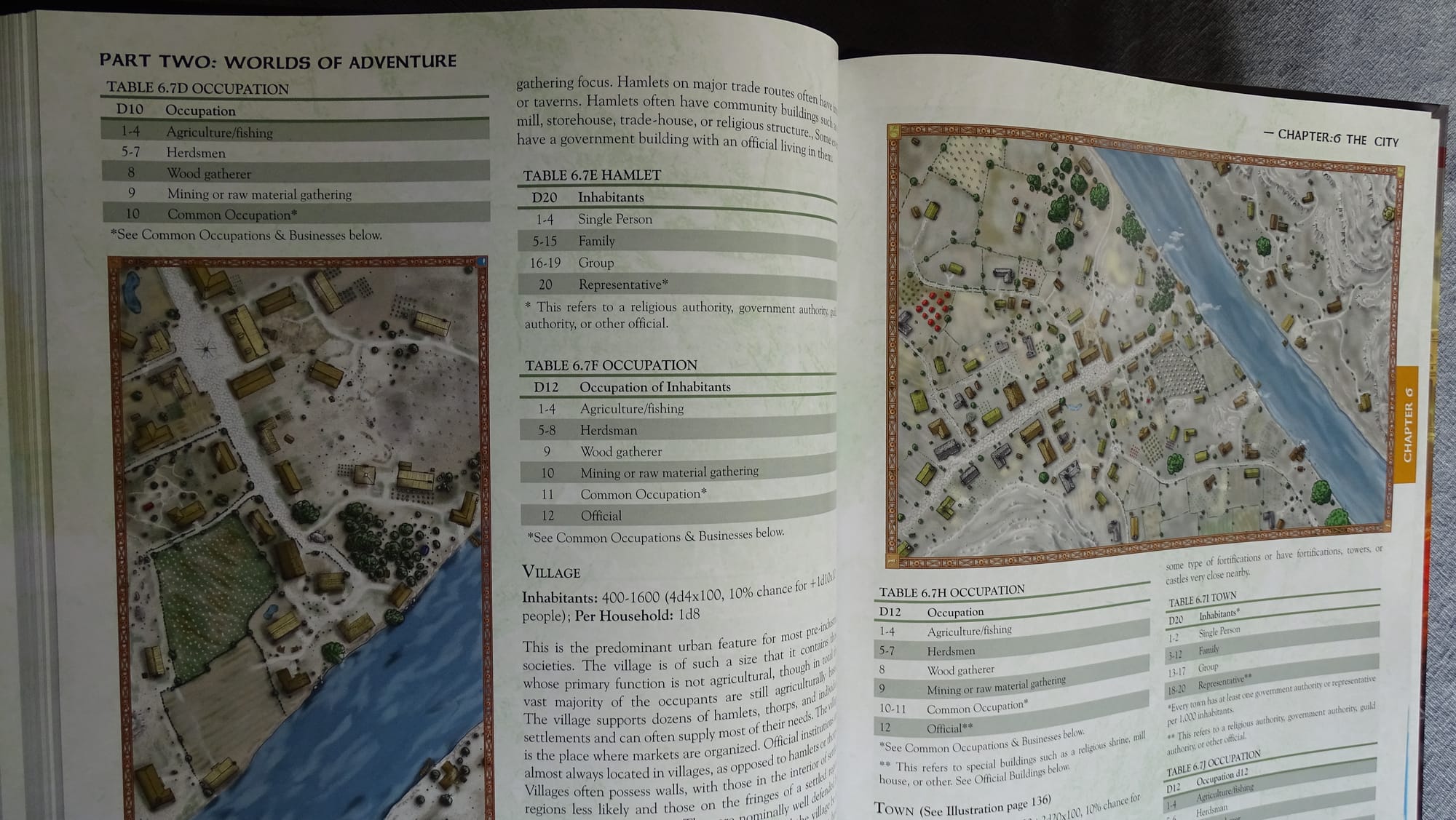
It doesn’t stop there. Later chapters cover the granting of land and titles, with a good deal of expansion on what information was presented in Monsters & Treasure and how these play differently for the different classes. And of course, if you give the players a castle, you have to threaten to take it away. An entire chapter is devoted to massed unit warfare, sieges, sea battles, and how to run games using them. Another is on the running of monsters and how to use them in different ways.
The final adventure chapter is there to cover everything else. It’s advice on how to run games outside the Medieval fantasy standards, whether that be tonally or by moving into entirely different time periods. So of course, that means new equipment lists with flintlocks up to laser rifles and the special rules such things require.
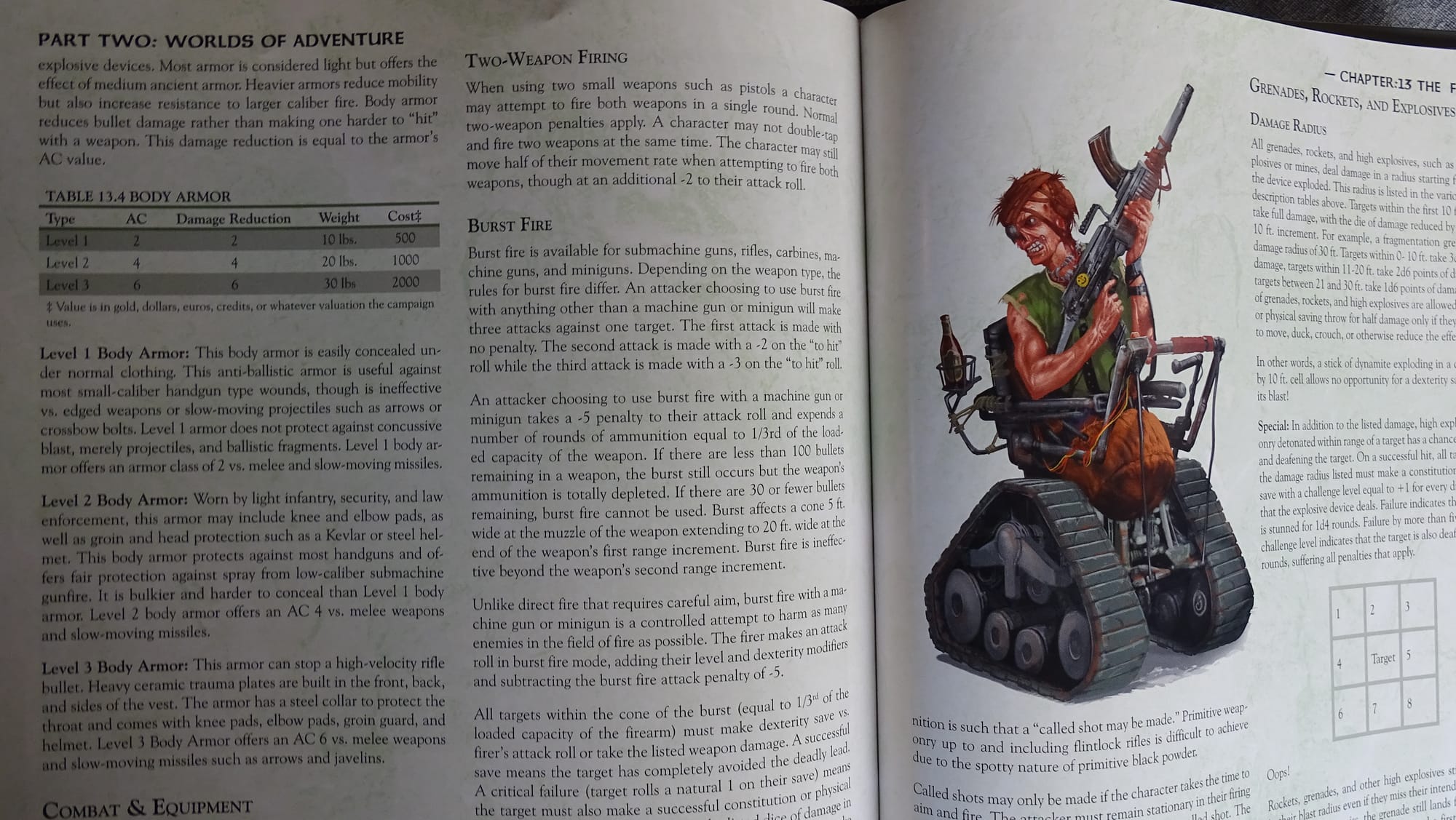
Part three of the book, the SIEGE Engine, is a bit more abstract. The SIEGE Engine is C&C's method for resolving almost everything that isn’t combat, and that’s certainly touched on here and even gets its own chapter. The concept is expanded a tad further to include things that might not connect directly to the SIEGE Engine, covering broader areas of gameplay. This means the individual chapters vary a lot as to what they comprise.
The opening chapter of this section is Chapter 14, “Advancing the Game”. This is mostly tips on running the game. It’s well written, includes some sample play with enough detail to be a sample adventure, and has a lot of good advice for a fledgling Castle Keeper. It’s a tad strange that it’s ¾ of the way through the book when it would seem better served at the beginning. It’s also very general advice, and CKs looking for answers to some kind of table event probably won’t find it here.
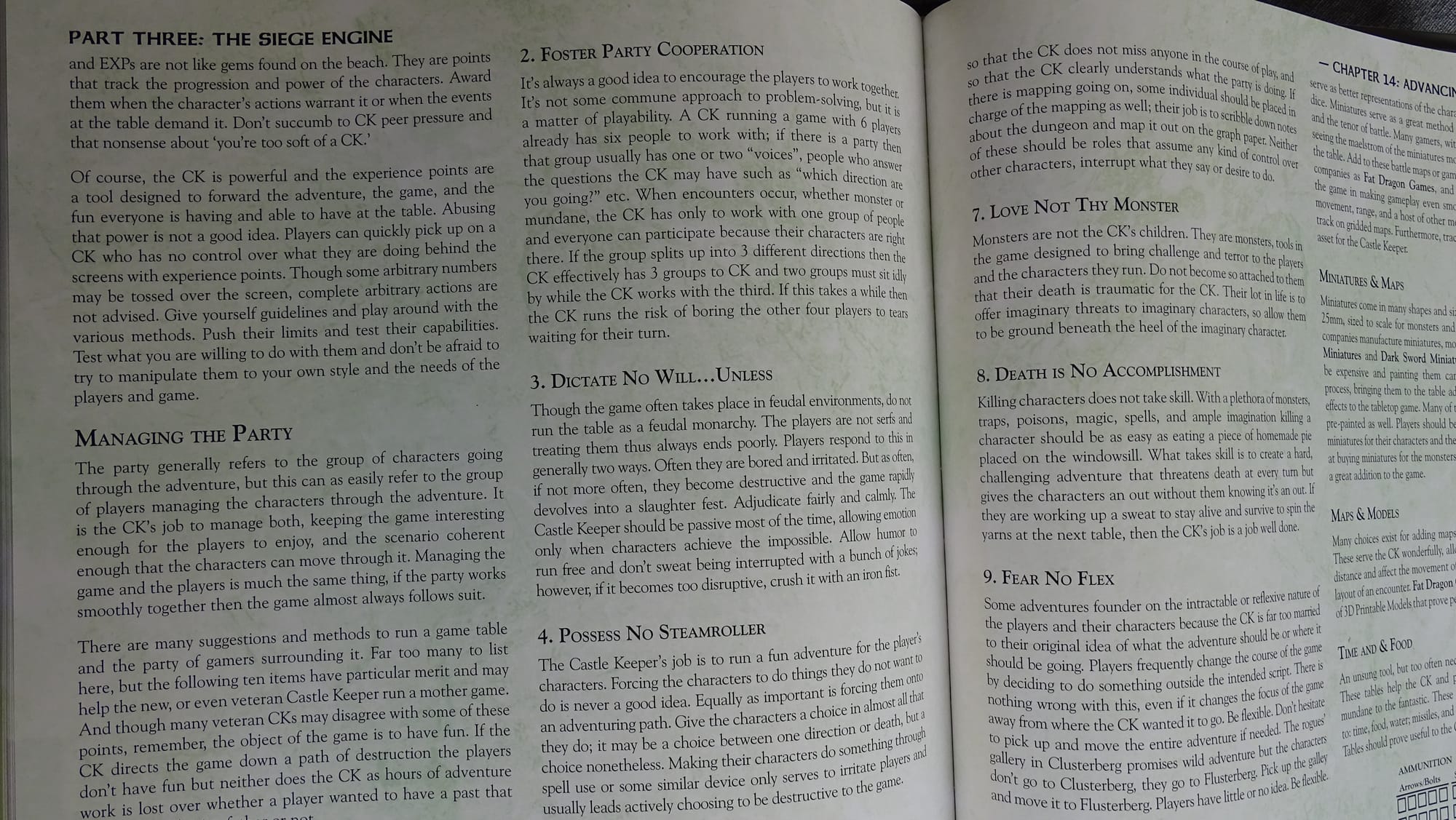
The SIEGE Engine chapter itself, Chapter 15, involves tinkering with those mechanics directly. It presents alternatives and expansions to the base system, along with some general advice for those systems and running the base version. The next chapter returns to treasure, with advice on how and how much, some magic item creation, and is generally a good expansion on what is given in Monsters & Treasure.
The last three chapters are what truly depart from the SIEGE Engine itself. Chapter 17 is dedicated to combat, presenting options like critical hits, alternative armor systems, and expanded maneuver descriptions. Chapter 19 is dedicated to dealing with character death, how it can happen, and the effects it can have at the table. It’s fantastic advice for any gamemaster running any game.
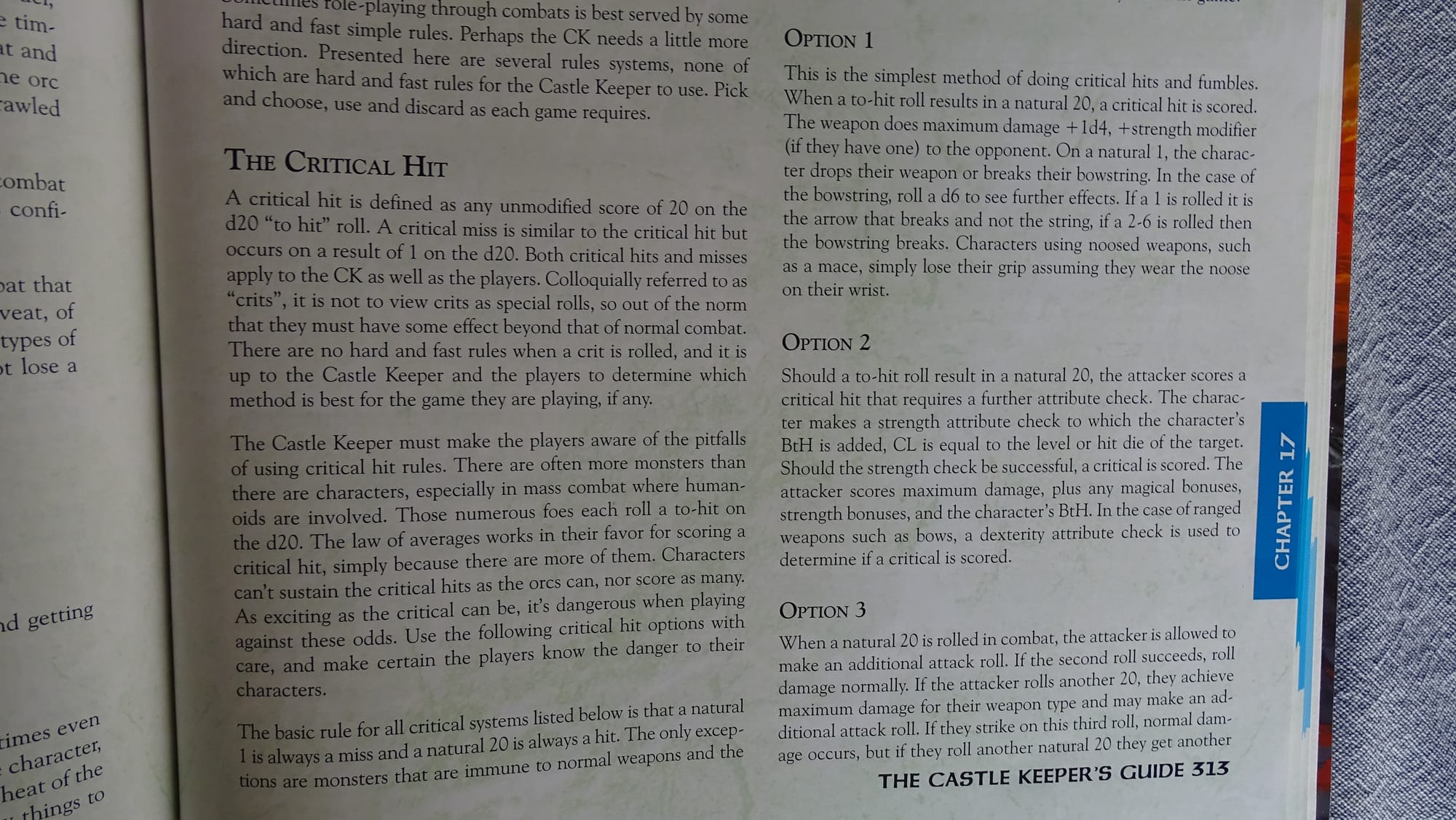
I have to call special attention to Chapter 18, which, despite being one of the shortest, can have a huge impact on gameplay. Characters from the PHB generally have no class choices, and there’s no skills, feats, or any other similar system in the baseline game. A skills option is presented here, which is less meant as a major change to the SIEGE Engine but instead as a supplement to a character’s die rolls in specific circumstances. These are presented as an outgrowth of character play, as well as some that come from the pre-adventuring days.
Far more impactful is the Advantages system, which is most similar to a system like Feats in D&D 5th Edition. The book lays out a few scenarios where Advantages would be used, and in most cases, it’s by replacing a class ability that would have been gained. There’s also a fair bit written as to how the various implementations of these rules could impact the game. This system is quite a departure from the game as presented in the PHB, and the Troll Lord designers want to make sure that CKs understand that. The Advantages themselves run the gamut, some with restrictions or requirements, but no race or class is left out.
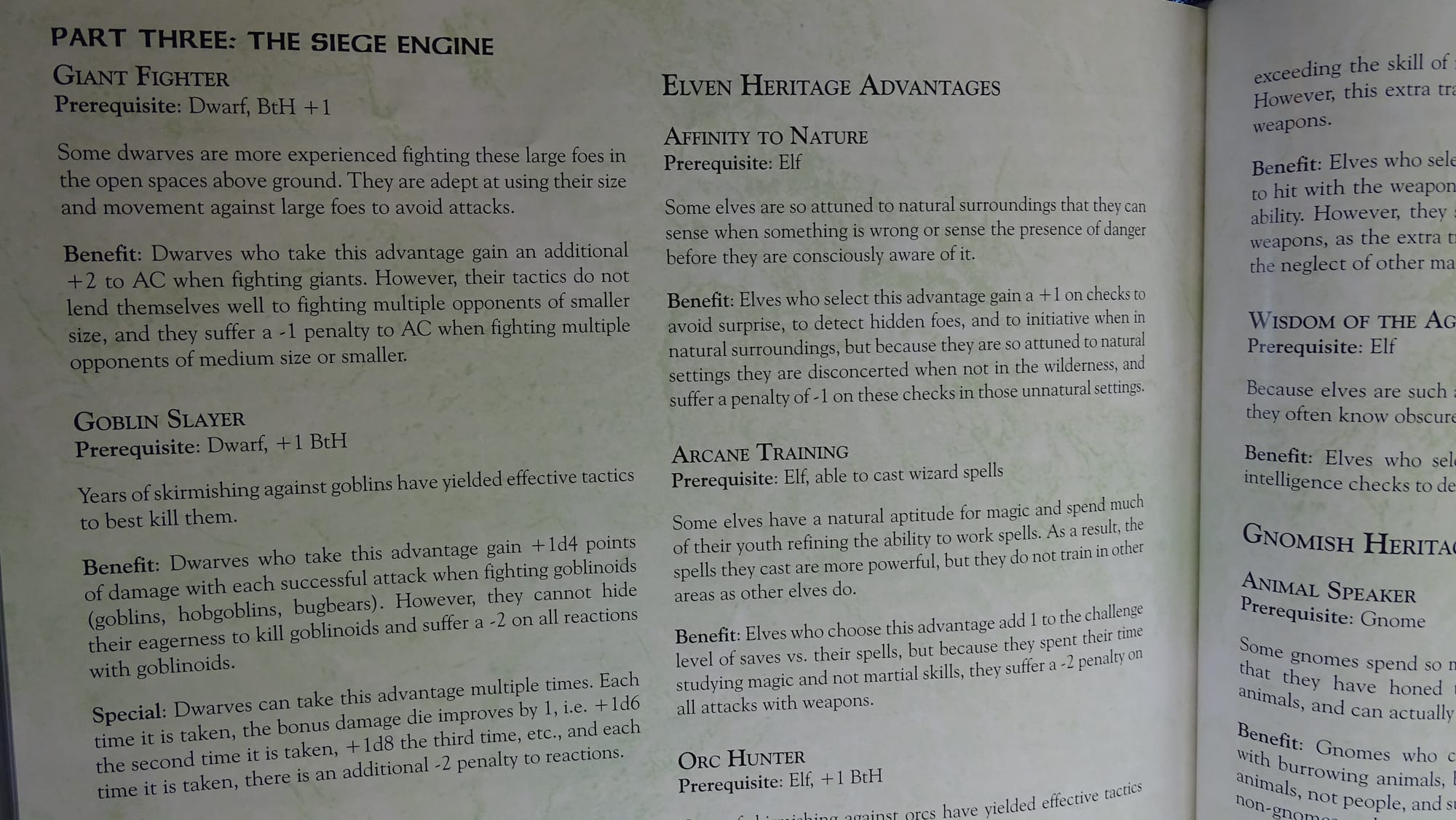
Taken as a whole, I realized the true purpose of the Castle Keepers Guide. The rules in the Players Handbook give the CK everything they need to run a session of Castles & Crusades. Eventually, the players and the CK will want something more. When the time comes to design and run a campaign, that’s what this book is for. And if the players suddenly decide to go in a different direction, well, that direction is probably covered as well.
Perhaps most impressively, the bulk of the information is system-agnostic and would work for nearly any fantasy RPG system. Most of these draw on similar quasi-Medieval worlds with a gold piece-based economy which fits right in here. The book as a whole can be seen as similar to a multi-tool, perhaps not as good at a particular thing as a dedicated book or campaign, but it will get that job done while also handling other jobs.
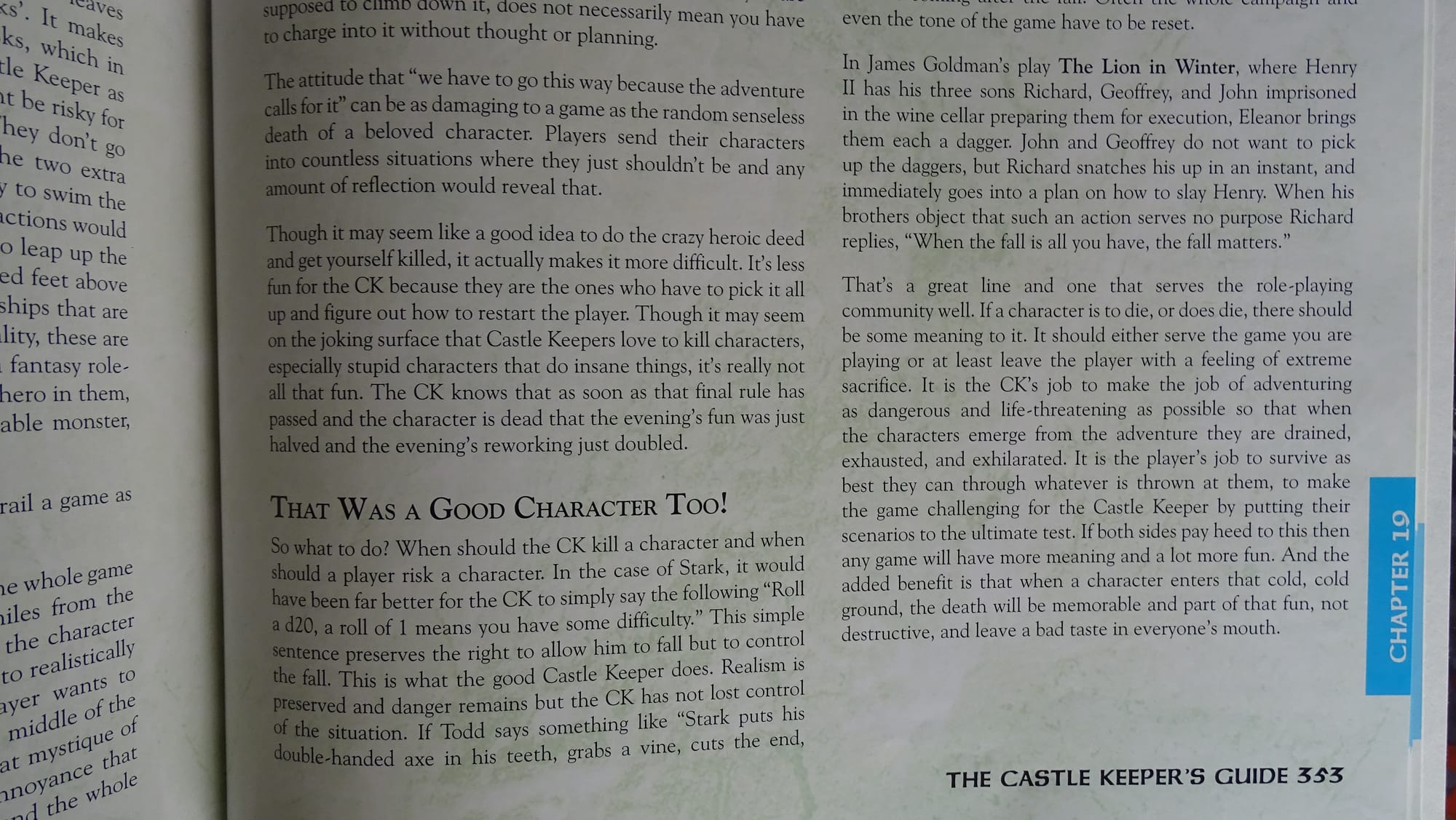
However, the book does have a few glaring weaknesses, mainly around accessibility. It’s not poorly laid out, and the way the chapters are organized makes sense. It’s that there’s simply nothing that points to the depth of what’s on offer. In the face of so much varied content, the one page of chapters listed in the table contents is woefully inadequate. There isn’t a chapter in this book that doesn’t cover multiple topics. Even the “parts” division only exists as a label at the top of the pages. The back of the book does have a serviceable index, but that only really helps someone who knows what they’re looking for.
The reason that accessibility is an issue is that the CKG has so much material that it’s frankly overwhelming to try and absorb it all. I’m an experienced gamemaster browsing the book with no specific expectations. Even so, I couldn’t go more than 10-20 pages without needing to stop and process what I’d just read. At times it reads more like a middle school textbook than a game guide. The temptation to jump around is always there, yet the very next paragraph might be the one that brings it into the context of a game or shares some good insight. Someone new to gamemastering diving into the book the way I did will almost certainly be crushed by the sheer volume of it all long before they reach Chapter 14. Even a CK using it for more than a handful of rules at a time should prepare a self-organized solution, perhaps sticky notes or making a spreadsheet. That said, someone who pushes through and learns what the CKG has to offer will be well rewarded.
Castles & Crusades Castle Keepers Guide
Great
The Castle Keepers Guide is overflowing with advice, rules, options, and a good bit of historical context. Castle Keepers devising a campaign will get the most out of it, but nearly any fantasy gamemaster would find something useful here. Just how useful will depend on the reader’s ability to break through the barrier of entry.
Pros
- Outstanding guidance on every topic addressed.
- Nearly any kind of campaign type or setting is covered, always in detail.
Cons
- Occasionally detailed to the point of exhaustion.
- Table of Contents barely covers a drop of what the book has on offer.
- Limited advice for new CKs even if they can find it.
This review is based on a retail copy provided by publisher.
